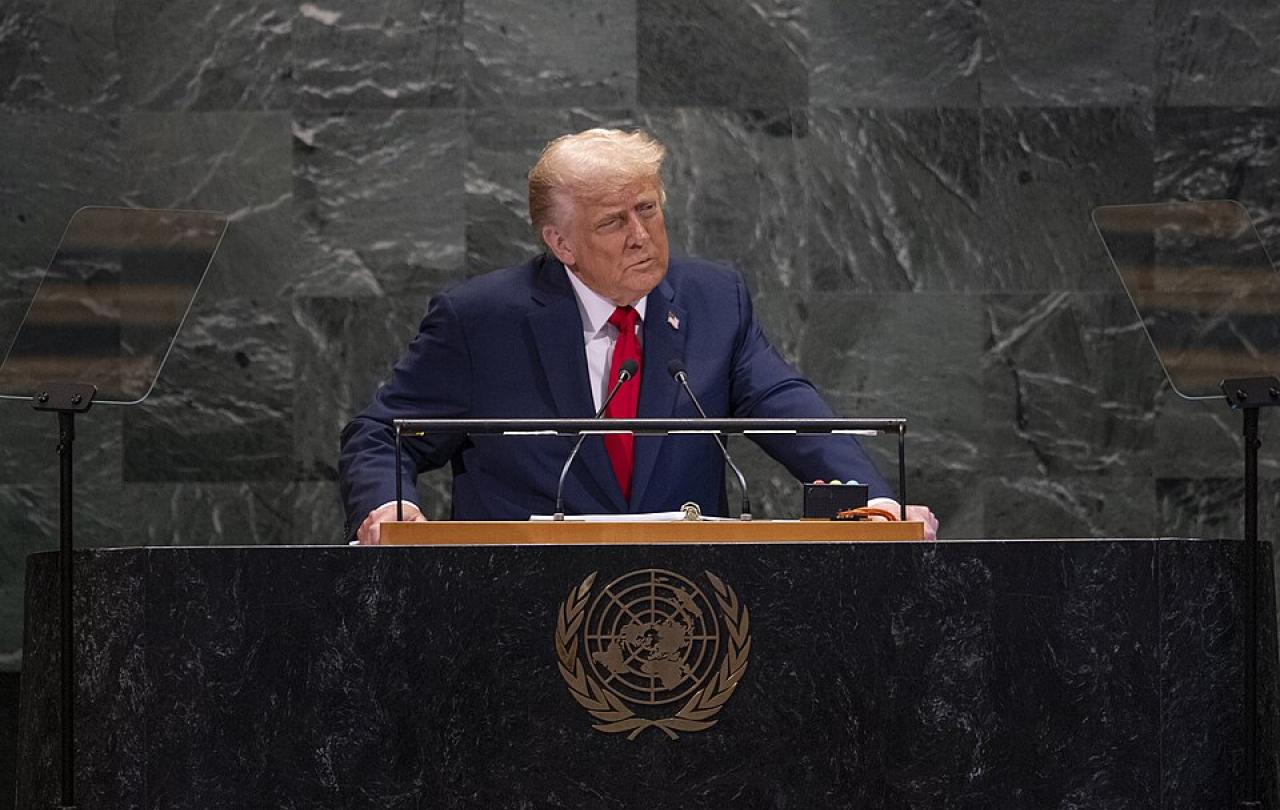
I knew something was seriously wrong when I hosted a live interactive online assembly for a couple of thousand sixth formers last year. Given a range of emojis the one that was chosen most to represent how they felt about politics wasn’t a thumbs up, or sleeping face, - it was the pile of poo emoji. The vast majority also expressed a deep distrust in government believing they neither listened to nor cared about them. It was then that I realised democracy was in trouble—and not just on the global stage. Here in the UK, a deeply worrying trend is emerging: more than half of Generation Z (those aged 13-27) believe the country would be better off under a dictator.
Recent controversial polling from Craft, commissioned by Channel 4, reveals that 52 per cent of Gen Z believe the UK should be run by a strong leader who does not have to bother with parliament or elections. Even more alarmingly, 33 per cent think the country would be better off if the army were in charge. If that doesn’t make us sit up and take notice, consider this: nearly half (47 per cent) of Gen Z believe our society must be radically changed through revolution.
These numbers are staggering. For those of us who have grown up with a strong commitment to democracy, it is unthinkable that the generation raised with the most freedom, the most access to information, and the greatest digital connectivity could be so willing to give up their right to vote, protest, and hold leaders accountable. But before we rush to condemn, we need to ask the hard question: why do so many young people apparently feel this way?
A lost faith in politics
What if it isn’t so much that Gen Z has turned against democracy, but that they feel democracy has turned against them? Think about it. Their schools are crumbling. Their teachers are stressed. If they need mental health support or special needs support, they have either a long wait or a hard fight on their hands and probably both. If they want to go to university, they have to take on a debt that will last longer than the time they have been alive. And pity help them if they want to buy a house - statistics suggest they will probably have to wait until they are 33 years old to even think about getting onto the property ladder.
You might think that these struggles would force Gen Z to become more politically active. But this generation remains the least politically engaged group in the UK. Whilst it is true that currently many are too young to vote, there is also a large proportion who is too disconnected to see the relevance of formal politics. Voter turnout for young people has been abysmal in the last three UK general elections:
- 2015: 43 per cent
- 2017: 54 per cent (a temporary spike due to Jeremy Corbyn’s appeal)
- 2019: 47 per cent
Compare that to the 70 per cent plus turnout for over-65s, and the message is clear: young people aren’t voting, and in return, politicians aren’t speaking to them. Which only exacerbates the problem. Despite the Labour Party manifesto promise that they would introduce voting at 16, they seem to be in no hurry to introduce the reform.
While Gen Z engagement with traditional politics is low, their political leanings have shifted. Over the past two decades, Gen Z has moved slightly to the centre-left, while older generations tend to lean centre-right. Today, age is a stronger predictor of voting behaviour than social class, which is a dramatic shift from previous decades. Though Gen Z is more liberal overall, they are also more radical in their discontent—and that’s where the real danger lies.
When young people feel unheard, they don’t just disengage—they seek alternatives. Their frustration has left them susceptible to radical ideas and strongman narratives. While previous generations turned to grassroots activism, protests, and community engagement, Gen Z is more likely to be influenced by leaders they can follow online - like Andrew Tate, Jordan Peterson, and Nigel Farage, who offer clear, confident, and often extreme critiques of the system.
The result? Despite strong examples in the positive activism of Greta Thunberg, Marcus Rashford and Malala who have used democratic means to make a positive difference, there is a growing number of young people who see democracy as weak and ineffective, and dictatorship as strong and decisive.
A wake-up call
But there is hope. By engaging young people directly there is an opportunity to change the trajectory. That’s what we discovered at our online interactive event for sixth formers. One of the most powerful voices at the event was Sophia, a recently turned 18-year-old Ukrainian refugee, who spoke about her experience fleeing war. She told her story of being separated from her father who was in Ukraine fighting for democracy. She shared how Ukrainians are fighting—not just with weapons, but with their lives—for the very democracy that young Brits are so ready to discard. Her message to British students was simple: “You don’t know how lucky you are.” She challenged them to see democracy not as a broken system, but as one that requires their participation to work.
It was a powerful moment. And it proved something vital: when young people hear real stories, from real people, they begin to see the consequences of the choices they are flirting with. As a result of that event, thousands of young people signed up to vote at the electoral commission.
Rebuilding trust in democracy
So what can be done? Here are three crucial steps.
Make politics relevant to Gen Z. Young people do care about issues like climate change, mental health, and social justice. But they are turned off democratic political solutions by the bureaucracy, mud-flinging and dragging timescales. By taking time to explain to them the processes, to involve them in the campaigns and to improve accessibility to politics and highlight the difference they can make, we may find that our most disconnected demographic could become democracy’s greatest asset.
Rebuild Gen Z’s trust in leadership. Scandals and dishonesty have left Gen Z cynical. We need leaders who are transparent, accountable, and willing to listen. We need parties who will do what they said they would do in their manifestos and on the doorsteps. We need Members of Parliament who are committed to spending time with the young people they are supposed to represent so that relationships of trust can be deemed possible again.
Empower Gen Z. There are initiatives out there—like our interactive live assembly and the G-EPIC project—that prove a simple truth: when young people feel heard, they engage. When they are inspired, they engage. When they are empowered to participate in the political process, they engage. Perhaps if we create more spaces for them to speak, lead, and act, they will step forward to shape the future.
History shows that democracy is never guaranteed—it must be fought for and protected by every generation. It also requires constant effort to ensure it serves all communities without scapegoating, persecuting, or marginalizing. And history warns us that without democracy, most dictators quickly become tyrants.
The challenge before us is urgent: we must help Generation Z recognize the power they hold to shape their world—before they surrender it to leaders who would take that power away from all of us.
Join with us - Behind the Seen
Seen & Unseen is free for everyone and is made possible through the generosity of our amazing community of supporters.
If you’re enjoying Seen & Unseen, would you consider making a gift towards our work?
Alongside other benefits (book discounts etc.), you’ll receive an extra fortnightly email from me sharing what I’m reading and my reflections on the ideas that are shaping our times.
Graham Tomlin
Editor-in-Chief





